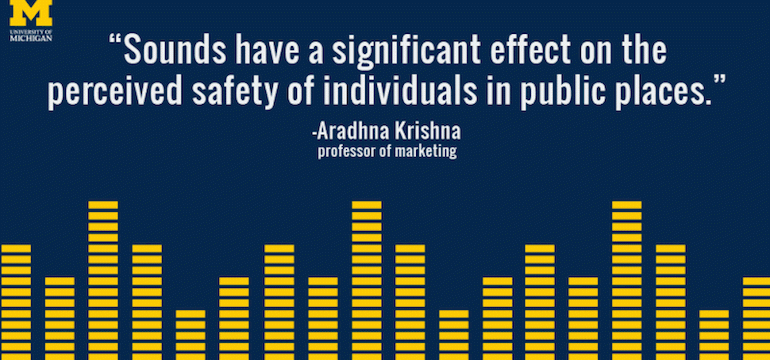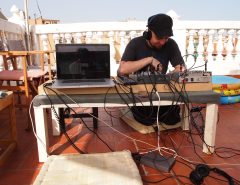What sounds make us feel safe in public?
Rationally speaking, most people know that random, violent crime is rare. But that doesn’t keep them from getting the creeps when they walk through a parking structure or other public place that’s not well-lit or crowded.
This leads people to avoid places that are otherwise safe. How to reduce that fear? New research by University of Michigan marketing professor Aradhna Krishna shows that certain ambient sounds create a feeling of safety in such places.
«There is a feeling of unease when people are alone in public places, such as a parking garage, metro station or airport tunnel,» said Krishna, the Dwight F. Benton Professor of Marketing and director of the Sensory Marketing Laboratory at Michigan’s Ross School of Business.
«This doesn’t just give people bad feelings. It can have negative business effects when people actively avoid such areas. We know some retailers have used ambient sounds to affect customers’ moods and time perceptions. We wondered if the correct ambient sound could also make people feel secure.»
Krishna and colleagues conducted a field study in a parking garage on the Champs-Élysées in Paris and four lab experiments to examine the effects of different types of ambient noise—and no noise—on people’s feelings and behavior at an underground parking lot and a simulated metro station.
The researchers played classical instrumental music, bird songs and no sound at the underground parking lot. People who heard the bird songs felt a higher sense of perceived safety than those who heard the instrumental music, or no sounds.
Another experiment added human vocal sounds to the mix, and it showed people reacted positively to both the bird songs and human vocal songs. Both bird sounds and human vocal sounds made people feel a social presence, which then gave them an increased sense of safety.
They then tested the effect of sounds on consumer behavior. Study participants were shown a video of a metro station with the various sounds—human voices, bird songs, instrumental and no sound. They were asked a series of questions about the station and their perceptions, and whether they would be likely to stop and buy a monthly pass at that station.
Those shown the video played with human vocals and bird songs rated the station as safer and were more likely to say they would by a monthly pass there than people who heard the instrumental music or no song.
«We provide some real-world evidence that appropriately chosen ambient sounds introduced in public spaces perceived to be dangerous can increase human comfort and feelings of safety,» Krishna said. «Bird songs and human vocal sounds give a sense of social presence and seem to be the most effective to use. They even lead to more positive consumer responses and overall higher satisfaction with these places.»
Krishna also lends a note of caution «to not use ambient sounds to give a false sense of security when places are actually unsafe.»
The study will be published in a forthcoming edition of the International Journal of Research in Marketing.





Leave a Reply
Lo siento, debes estar conectado para publicar un comentario.